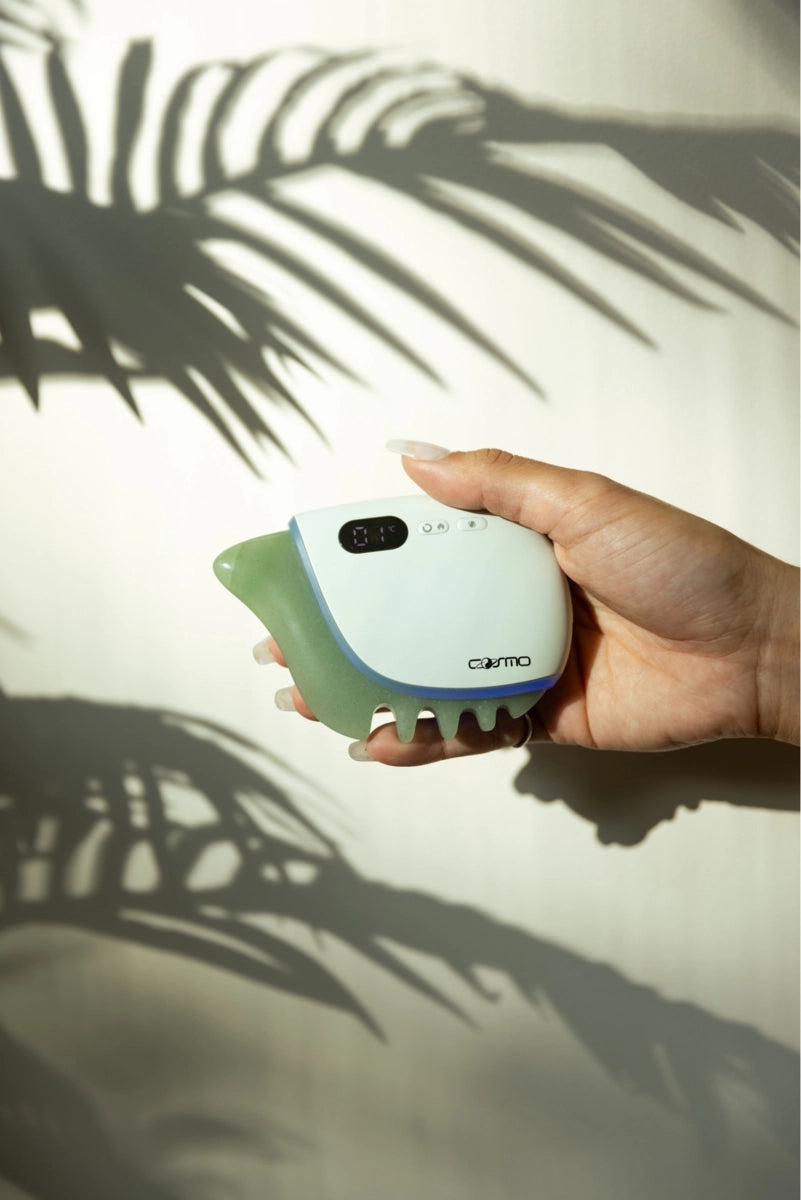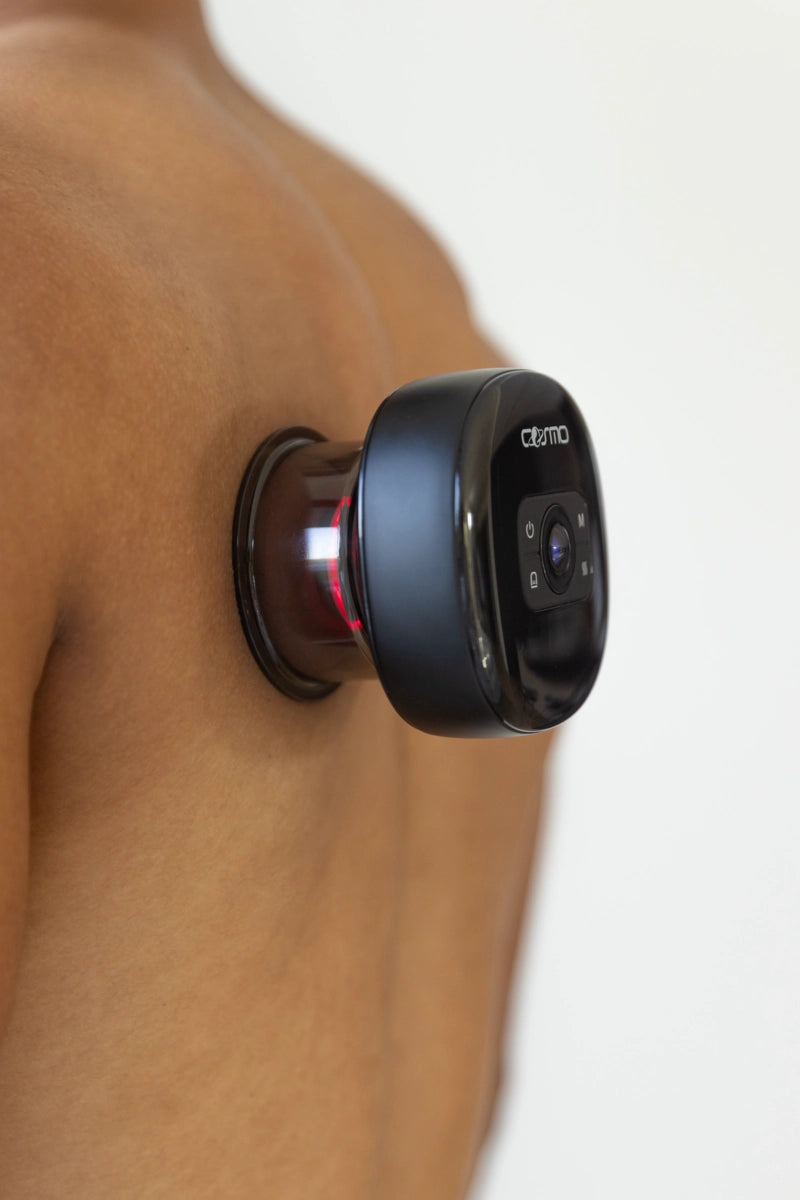

Meridians, Fascia, and Myofascial Connections
Meridians in Traditional Chinese Medicine (TCM)
In Traditional Chinese Medicine (TCM), meridians are conceptual channels or pathways through which life energy, known as Qi, flows throughout the body (1). These meridians form an interconnected network linking the surface of the body to internal organs, essentially acting as “energy highways” that integrate the entire organism (2). There are 12 primary meridians, each associated with a major organ system (lung, heart, stomach, etc.), as well as additional collateral and extraordinary channels (3). Along each meridian lie specific acupuncture points, sites where Qi is accessed and regulated; by stimulating these points (with needles, pressure, etc.), practitioners aim to correct imbalances and promote healthy energy flow through the meridian network (4). In sum, the meridians provide a functional map of the body used in acupuncture, acupressure, and other therapies to diagnose and treat illness by restoring the free flow of Qi and blood.
Figure: Classical TCM meridian map of the human body (anterior view on left, posterior view on right). The colored lines trace the 12 major meridians, each corresponding to an organ system (e.g. red = Heart, green = Gallbladder). Acupuncture points (small nodes along the lines) lie on these channels. By stimulating these points, TCM theory holds that one can influence the flow of Qi along the meridian and thus affect the associated organ’s function (1) (2). Note how the meridians form a comprehensive network covering the entire body.


Historically, meridians were described in metaphoric terms – as invisible rivers of energy or “vital force” – rather than literal anatomical structures. This led to some skepticism in the Western scientific view, as these channels are not identifiable as discrete physical vessels. However, modern research has prompted renewed interest in finding physiological correlates for meridians. Notably, meridian pathways often correspond to known anatomical structures like nerves, blood vessels, or connective tissue planes (5). As we’ll explore, one especially intriguing hypothesis is that the meridian network aligns with the body’s fascia– the continuous connective tissue web – providing a possible anatomical basis for TCM’s meridians (6).
Fascia: The Body’s Connective Tissue Web
Fascia is the thin, fibrous connective tissue that wraps every muscle, bone, organ, nerve, and blood vessel – essentially packaging the body and linking all its parts. Modern anatomy recognizes fascia as a continuous three-dimensional network that extends from head to toe without interruption (7). It includes superficial fascia (just beneath the skin), deep fascia (surrounding muscles and organs), tendinous sheets, ligaments, and other collagenous connective tissues. In function, fascia provides structural support and shape to the body, transmits mechanical forces, and reduces friction between moving structures. It’s often described as a “body-wide web” or “organ of form”, since it binds tissues together and compartmentalizes structures while also allowing smooth movement between them (8)(9). For example, when you raise your arm, the force doesn’t just involve individual muscles – the fascia helps distribute tension across multiple muscles and joints, maintaining continuity and alignment.
Importantly, fascia is rich in nerves and sensory receptors, making it a critical organ for proprioception (the sense of body position and movement) and pain. Constraints or injuries in one part of the fascial network can propagate tension to distant regions – a pull in the foot’s fascia might, for instance, affect the lower back due to the continuous connections. Research in fascia anatomy highlights that the body cannot be viewed as isolated muscle groups, but rather as an integrated mechanical system linked by the fascial fabric (8)(10). This holistic view resonates with TCM’s view of interconnected meridians: both frameworks suggest that a problem in one area can have ripple effects throughout the body via continuous networks (fascial or energetic). Modern fascia science also notes that connective tissue houses fluids and may facilitate cell-to-cell signaling (through mechanotransduction, piezoelectricity, etc.), hinting at non-neural communication pathways within the body (11). All these properties make fascia a compelling candidate to examine when seeking the “physical substrate” of the meridians.
Myofascial Meridian Lines (Anatomy Trains)
Contemporary anatomy and physiotherapy have embraced the concept of myofascial meridians – often credited to Thomas Myers, author of “Anatomy Trains.” Myers’ work maps the body into a set of longitudinal “lines” of connective tissue that link muscles into functional chains. Unlike traditional anatomy, which might study one muscle in isolation, the myofascial meridian model recognizes that muscles are connected end-to-end by fascia, so that force applied in one muscle can be transmitted along the line to others. Each myofascial line includes muscles, tendons, ligaments, and fascial sheets that continuity of tension can pass through. This gives a structural explanation for why, for example, tension in the calf might affect the hamstrings and even the lower back – they are all part of a continuous fascial line.
Myers identified around 12 major myofascial meridians, with descriptive names such as the Superficial Back Line, Superficial Front Line, Lateral Line, Spiral Line, Deep Front Line, and several arm lines and functional lines (which cross from one side of the body to the other). Each has a specific anatomy and role. For instance, the Superficial Back Line (SBL) runs from the underside of the foot (plantar fascia), up the back of the legs (calf muscles and hamstrings), along the spine (erector spinae and fascia), and over the scalp to the forehead. It supports upright posture and prevents us from folding forward – essentially forming a continuous “tensional cable” along the posterior body. The Superficial Front Line (SFL) mirrors this on the front, connecting the top of the toes, up the shins and quadriceps, through the abdominal muscles and chest, to the skull – assisting in forward bending and posture on the anterior side. The Spiral Line winds around the torso and legs in a helix, helping with rotational movements and keeping us balanced in all planes. The Lateral Lines run along the sides (peroneal muscles of the leg, iliotibial band, lateral torso and neck muscles) and help with side-bending and stabilizing the trunk and legs. The Deep Front Line is an internal core line including the deep postural muscles (psoas, diaphragm, pelvic floor, etc.) and is crucial for core stability and integrating breath with posture.
What makes these myofascial meridians particularly relevant is growing evidence that they are not just theoretical. Cadaver studies and anatomical dissections have confirmed actual physical continuities along many of these lines. A 2016 systematic review by Wilke et al. surveyed decades of dissection studies and found strong evidence for the existence of several Anatomy Trains lines. For example, all proposed connections in the Superficial Back Line were validated by direct tissue continuity in multiple studies. Researchers could literally dissect a single continuous strip of fascia and muscle from the heel to the skull, confirming Myers’ map. Similarly, the “functional lines” connecting arm to opposite leg (used in throwing or swinging motions) were supported by dissection evidence. Parts of the Spiral and Lateral lines had moderate evidence, whereas the Superficial Front Line was not well supported in dissections (no continuous chain found in that exact pattern). Overall, the conclusion was that “most skeletal muscles of the human body are directly linked by connective tissue”, underscoring that the body is indeed a web of connected myofascial chains rather than isolated segments. This evidence-based validation of myofascial meridians has big implications for understanding movement, posture, and even referred pain patterns (pain can spread along a fascial line). It also provides a fascinating bridge to Traditional Chinese meridians – which also describe longitudinal pathways through the body.
Figure: Myofascial Meridian Lines as illustrated by the Anatomy Trains concept. This chart depicts the major myofascial lines in the body, each drawn as a continuous band through muscles and fascia. For example, the Superficial Back Line (center, in red) runs from the soles of the feet up the back to the scalp, while the Superficial Front Line (yellow, on the right of figure) runs along the front of the body. These lines show how distant regions are mechanically connected: tension or movement in one area can affect the entire line. Modern dissection studies confirm that many of these lines (especially the back line) are actual continuous fascial structures. This systems view of anatomy parallels TCM’s meridians, which also traverse long pathways and link distant body parts functionally.


Aligning Meridians with Myofascial Anatomy
The striking parallels between TCM meridians and myofascial lines have prompted researchers to investigate how these two maps might overlap. An emerging theory in integrative medicine is that meridians are essentially representations of the body’s fascial network. In other words, what ancient physicians conceptualized as channels of Qi might correspond to planes and tracks of connective tissue that modern anatomy is now elucidating.
A seminal study by Langevin and Yandow (2002) provided one of the first pieces of concrete evidence for this alignment. By mapping known acupuncture points onto cross-sectional anatomy, they found that about 80% of acupuncture points correspond anatomically with fascial planes or clefts between muscles. For example, many acupuncture points occur at locations where connective tissue fibers converge or where intermuscular septa (the thin fascial partitions between muscle groups) come to the surface. Furthermore, entire meridian paths often follow connective tissue planes: the authors observed that the course of certain meridians (as described in TCM texts) closely tracks along separations between muscle groups or along longitudinal fascial compartments in the body. This is unlikely to be mere coincidence. It suggests that early acupuncturists, through empirical observation, identified lines on the body that happen to coincide with anatomical seams and networks now known to be formed by fascia.
Subsequent research strengthened the meridian-fascia connection. In 2011, Yu Bai and colleagues reviewed a wide range of anatomical and imaging evidence and concluded that “the human body’s fascia network may be the physical substrate of the meridians of TCM.” They compared MRI and CT scans of living bodies (from the Visible Human Project in China) with traditional meridian maps, and found that thick connective tissue tracts seen in imaging corresponded to the courses of major meridians. For instance, 3D reconstructions of the fascia in the torso revealed “line-like structures which are similar to those of acupoints and meridians”. When all the connective tissue was rendered, an interconnected web appeared – remarkably similar to the TCM meridian network pattern covering the whole body. In that study, the authors even demonstrated specific examples: a fascia pathway running up the midline of the front torso matched the Ren Meridian (Conception Vessel), and one along the midline of the back matched the Du Meridian (Governing Vessel). In the limbs, a continuous fascial strip in the lateral arm corresponded to the Triple Burner (San Jiao) channel, and another in the forearm matched the Large Intestine channel. In the legs, fascial bands aligned with the Kidney meridian on the inner leg and the Gallbladder meridian along the side of the leg. These correlations support the idea that when TCM describes a meridian flowing from, say, the foot to the torso, there may indeed be a connective tissue pathway running that same route.
Physiologically, this makes sense. Fascia is not only structural; it’s studded with nerves and can conduct electrical signals and mechanical vibrations. Nerves and blood vessels often travel within fascial planes, meaning acupuncture needles inserted at fascial junctures could influence nerve signaling or circulation along that plane. One hypothesis is that the “Qi” traveling in meridians might be partly explained by electrical or piezoelectric signals propagated through the connective tissue, or by the facilitated spread of biochemical signals in the interstitial fluids of fascia. Indeed, some experiments have shown slightly different electrical characteristics (like lower impedance) at acupuncture points and along meridian paths, although evidence is mixed and not yet conclusive on this front (studies have had quality issues and inconsistent results) Nonetheless, the fascia-meridian theory offers a tangible framework: stimulating an acupoint could deform or excite a connective tissue plane, which in turn sends a message (mechanical, neurological, or chemical) along that plane to distant sites – a plausible biological basis for the remote effects of acupuncture.
It’s important to note that while meridians and myofascial lines show remarkable alignment, they are not exactly identical one-to-one. Meridians are a network including some transverse connections and internal pathways to organs, whereas myofascial lines as mapped by Anatomy Trains focus on musculoskeletal continuities. However, they intersect and overlap significantly. For example, the Urinary Bladder meridian in TCM runs down the back of the body from head to toe, which is analogous in route to the Superficial Back Line – both cover the posterior median plane (the bladder meridian runs just lateral to the spine and down the back of the leg, roughly within the territory of the SBL). The Stomach meridian runs down the front of the body and lateral leg, similar to portions of the Superficial Front Line. The Gallbladder meridian wraps along the side of the leg and torso, comparable to the Lateral Line. Such parallels suggest that over centuries, TCM practitioners charted out “myofascial” discomfort or dysfunction lines through trial and error, which coincidentally mirror actual connective tissue distributions. Modern practitioners of acupuncture are increasingly aware of fascia’s role: needling technique (such as the “needle grasp”) intentionally engages fascia – when a needle is inserted and rotated, the surrounding connective tissue winds around it, creating mechanical stimulation along that fascial plane. This “needle grasp” phenomenon (deqi) is thought to be important for acupuncture’s effect and is literally a fascial response (the collagen in the tissue winds and tightens around the needle).
In summary, a growing body of evidence bridges ancient theory with modern anatomy: TCM meridians likely trace the paths of connective tissue through the body. Fascia provides the anatomical continuity needed to carry effects from one area to another – just as meridians do. This convergence of concepts not only lends credibility to the meridian model in scientific terms, but also enriches our understanding of fascia, suggesting it plays a key role in whole-body communication and regulation. It sets the stage for understanding how traditional practices like cupping and Gua Sha (which act on the body surface) can produce deep and systemic effects via the myofascial meridian network.
References:
- Bai, Y., Wang, J., Wu, J. P., et al. (2011). Review of evidence suggesting that the fascia network could be the anatomical basis for acupoints and meridians in the human body. Evid Based Complement Alternat Med, 2011, 260510 pmc.ncbi.nlm.nih.govpmc.ncbi.nlm.nih.gov.
- Wilke, J., Krause, F., Vogt, L., & Banzer, W. (2016). What is evidence-based about myofascial chains: a systematic review of human cadaveric studies. Arch Phys Med Rehabil, 97(3), 454-461 pubmed.ncbi.nlm.nih.govpubmed.ncbi.nlm.nih.gov.
- Langevin, H. M., & Yandow, J. A. (2002). Relationship of acupuncture points and meridians to connective tissue planes. The Anatomical Record, 269(6), 257-265 pubmed.ncbi.nlm.nih.gov.
- Ahn, A. C., Colbert, A. P., Anderson, B. J., et al. (2008). Electrical properties of acupuncture points and meridians: a systematic review. Bioelectromagnetics, 29(4), 245-256 pubmed.ncbi.nlm.nih.gov.
- Myers, T. (2009). Anatomy Trains: Myofascial Meridians for Manual and Movement Therapists (3rd ed.). Churchill Livingstone – Poster images and concepts adaptivebodywork.comcandent.ca.
- Integrative Healing Society (2020). Acupuncture & Fascia Course – Module on Myofascial Planes and Meridians. (Course materials on meridian myofascial anatomy) pmc.ncbi.nlm.nih.govpmc.ncbi.nlm.nih.gov.
- Adaptive Bodywork (2023). The Intersections of Our Body: Exploring Fascia Lines. AdaptiveBodywork Blog – Explains fascia lines and their impact on mobility adaptivebodywork.comadaptivebodywork.com.
- Yuan, L., Bai, Y., et al. (2015). Fascia and Primo Vascular System: Architectural basis for meridians. J Acupunct Meridian Stud, 8(5), 228-235 pmc.ncbi.nlm.nih.gov.
- Li, H. Y., et al. (2021). An acupoint-originated interstitial fluid circulation network in humans. Chin Med J, 134(19), 2365-2369 pmc.ncbi.nlm.nih.govpmc.ncbi.nlm.nih.gov.
- Schele, R. (2014). Fascia Science Meets Acupuncture. Acupuncture Today, 15(8) – Discusses overlap of fascial pathways and acupuncture channels in clinical practice pubmed.ncbi.nlm.nih.govpmc.ncbi.nlm.nih.gov.





